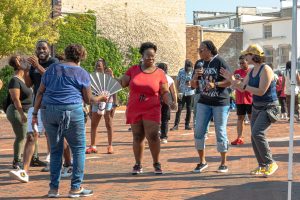Task force aids victims
August 24, 1990
No always means no.
One out of every four or five college women is sexaully assaulted every year, Bev Beetham, chairperson of the Sexual Assault Task Force said.
“And that’s just the tip of the iceberg, that’s just assaults that are reported,” Beetham said.
University Police Officer Ekstrom said most of the sexual assaults that occur on college campuses are acquaintance rapes or date rapes, not stranger rapes.
Of the cases that are reported, Beetham said more than 50 percent are alcohol related. In this type of situation, a party situation, the victim (usually a female) and the assailant (usually a male) has had too much to drink, both are not in complete control and a sexual assault occurs, she said.
Ekstrom said of the sexual assault cases the UPs investigate, more than 90 percent involve alcohol, drugs or both.
In these cases, communication is unclear and the interpretation of the victim’s response is not the same for both parties, Beetham said.
“Females should be clear about their sexual intentions. They should communicate their sexual limits clearly and not give mixed messages,” Ekstrom said.
A sexual assault is defined as “any undesired sexual advance,” Beetham said. This could involve even an undesired kiss.
A sexual assault involves some type of force because it is unwanted, Beetham said. The force could be physical or it could be coercived, with the victim being talked into a sexual encounter.
“If the victim is coerced, it’s still a sexual assault,” Beetham said.
What the Sexual Assault Task Force is looking for is prevention through education and awareness, she said.
Women should know their limit when it comes to drinking, communicate their desires for sex clearly and if they say “no,” mean “no,” Beetham said.
Ekstrom said women should minimize the risk of being sexually assaulted. “Trust your instincts, if you feel uneasy, if you feel something is wrong, get out of the situation. Don’t be polite about it,” he said.
And Beetham said men should respect what a woman says. “If a guy proceeds and does not respect her, she should push him away or yell for help.”
With regard to self-defense, Ekstrom said, “The best advice is to follow simple safety rules.”
“And if someone is being assaulted, (she should) try to remain calm and use her head. Your instincts and your brain are the best weapon,” Ekstrom said.
He said victims should look for “windows of opportunity” or a chance to get away, call for help, scream, or if needed, to use a weapon.
Beetham said in the Fall of 1989, 16 sexual assaults were reported at NIU. However, only 14 actually occurred during the fall semester. Two of those 16 happened in 1987, it took two years for the victim to report the assault and ask for help.
She said seven of the assaults involved alcohol and 10 occurred on-campus. Five assaults occurred off-campus and one location was unknown.
Most of the sexual assaults that happen in the fall occur in September when people are moving back to school, Beetham said.
Also, last spring, 13 sexual assaults were reported at NIU and eight of those involved alcohol. Beetham said six of the assaults happened on-campus and seven happened off-campus.
Off-campus locations include the apartment complexes and Greek Row, but Beetham said the Sexual Assault Task Force is going to revise the borders to make the definition of off-campus more clear.






